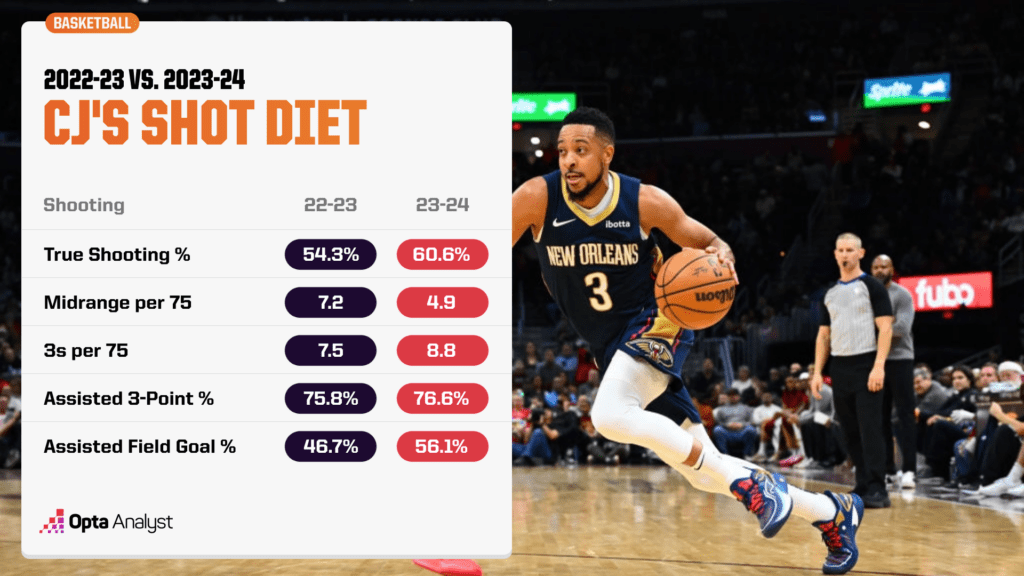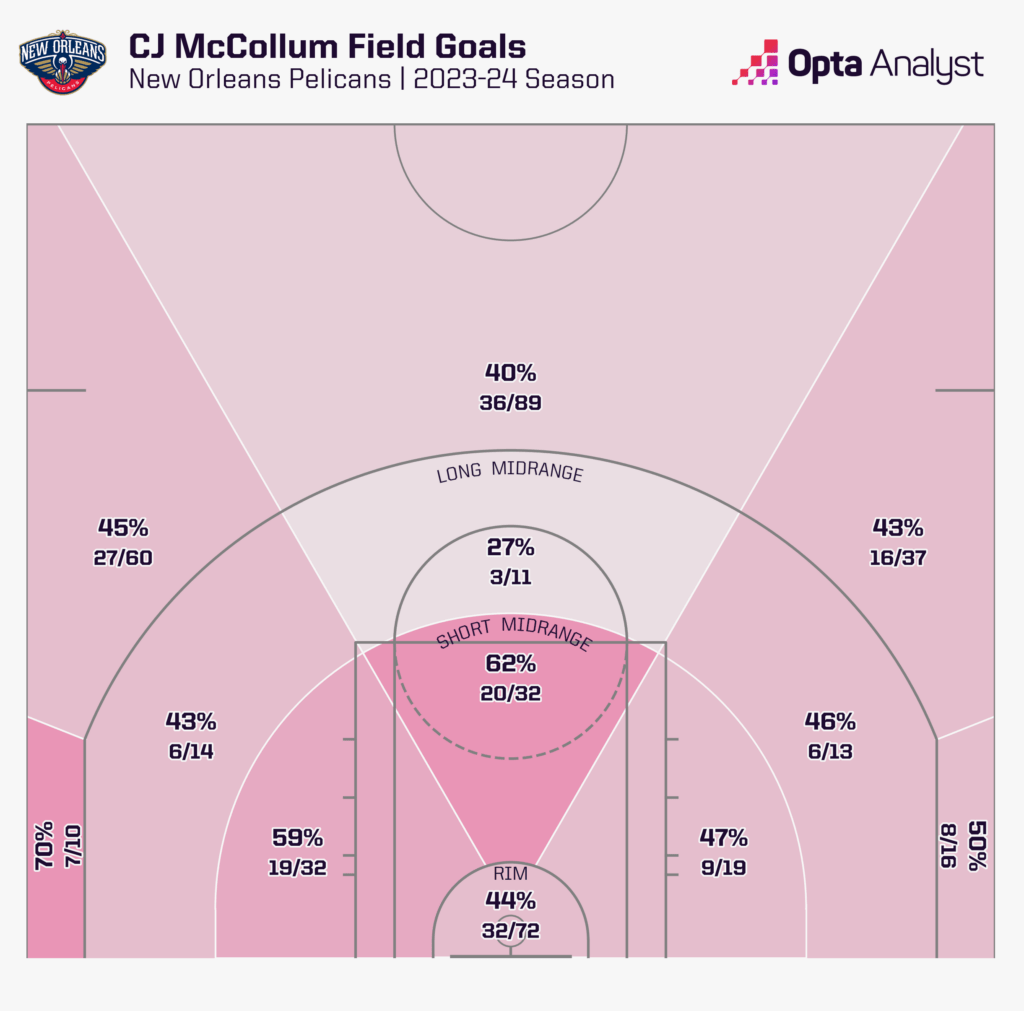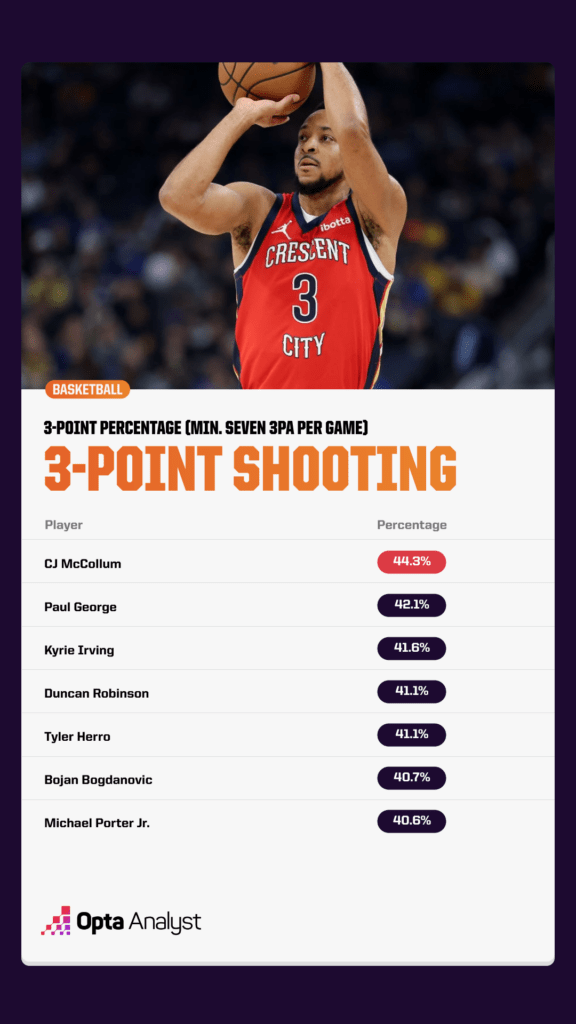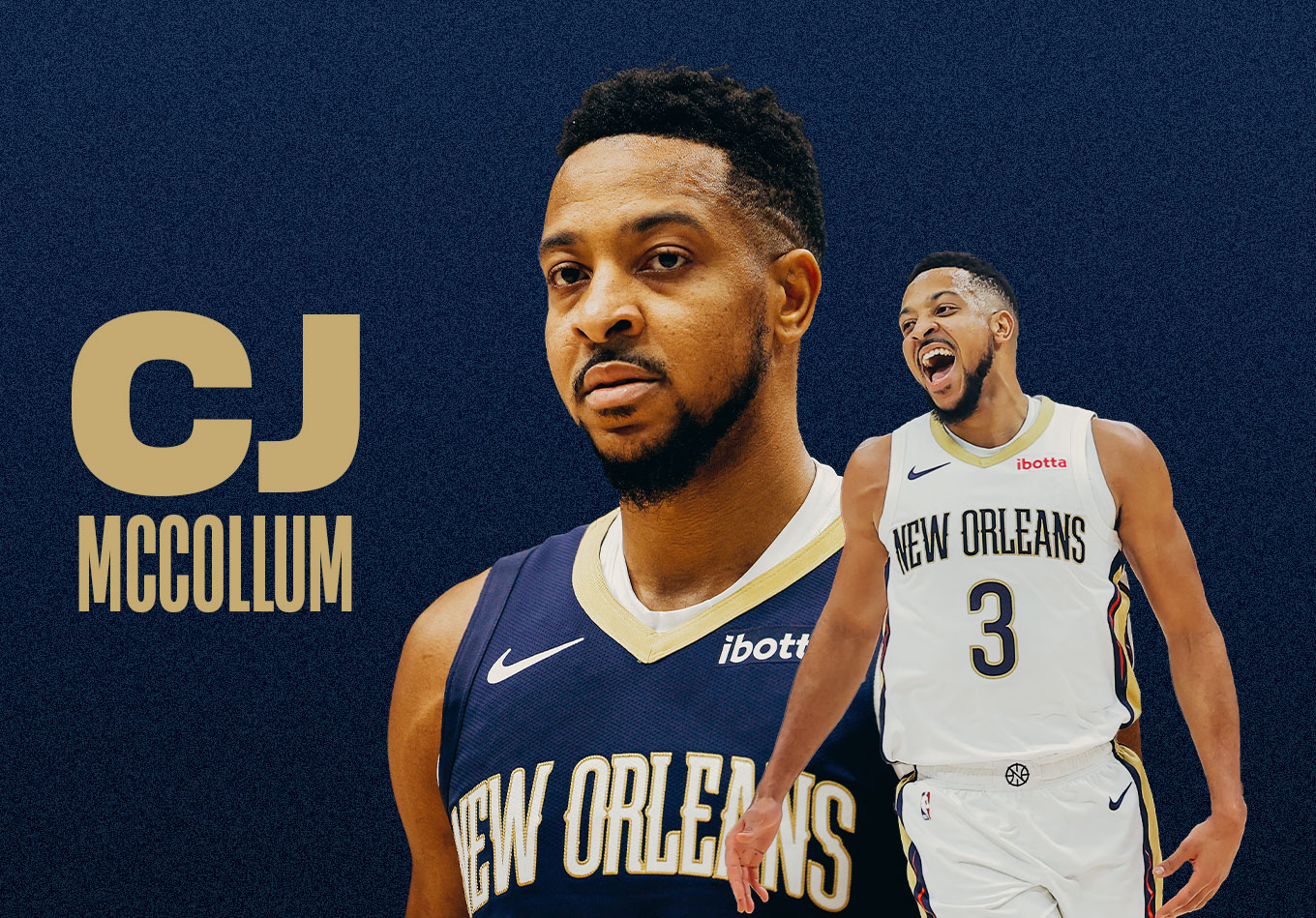After a sluggish start to the 2023-24 regular season, the New Orleans Pelicans have risen up the standings. They’ve gone 15-8 in their last 23 games, tallying the third-best net rating in the association during that stretch and looking like a real threat come playoff time.
And while there are many variables that you could point to for their recent success (one being that they are finally healthy), CJ McCollum deserves a good deal of credit, as the 11th-year veteran has reinvented himself and may be having the best year of his career.
In 2022-23, McCollum looked like his best years were behind him. On the season, he averaged just 21.6 points per 75 possessions (87th percentile) on 54.3% true shooting (26th percentile).
Those season stats may seem solid. But for someone who is supposed to be a professional scorer, those numbers don’t warrant the contract or playing time he was earning.
This year, McCollum has been able to maintain his scoring volume – 22 points per 75 (86th percentile) – while also improving his efficiency – 60.6% true shooting (68th percentile). He’s also averaging 19.6 points per game, 5.1 assists and 4.3 rebounds.
A New McCollum
A big reason for this improvement has been the change in the 2015-16 Most Improved Player Award winner’s shot diet.
The shooting guard has swapped out many of his less-efficient midrange jumpers (down from 7.2 midrange attempts per 75 to 4.9) for ultra-valuable 3-pointers (up from 7.5 3s per 75 to 8.8).

Now, now, before the old heads come for our heads. We aren’t saying that all shots need to be layups or 3s. There is still plenty of room for midrange jumpers, particularly when the defense has successfully taken away those other two areas of the floor, and you need someone to hit a tough shot.
McCollum spent his entire career being a tough-shot mercenary, and he’s still a tough matchup. But now, he’s picking his spots more wisely, and his percentages are thanking him for it. On the year, the Canton, Ohio, and Lehigh product is hitting 49.6% of his midrange shot attempts. That’s a career high.

McCollum doesn’t need to completely forego his bucket-getter roots. Instead, the idealized version of him is someone who can rein in the tough-shot making and save it for special situations. McCollum has learned to do that this season, as he’s averaging a career-high 56.1 assisted field goal percentage.
He’s also cut down his turnovers to 1.5 per game after averaging 2.4 last season and 2.0 in 2021-22.
The Perfect Partner
McCollum’s detractors may point to his 3-point percentage (which is up 5.4 percentage points from last season) and say that it’s the sole reason for his statistical improvement this year.
And it is true, McCollum is white-hot from 3. Of the 28 players who average at least seven 3-point attempts per game, no one is averaging a higher 3-point percentage than McCollum (44.3%).

But there are reasons to believe that number is sustainable. For starters, McCollum has always been a great 3-point and free-throw shooter (career 39.8 3-point percentage and 80.4 free-throw percentage), so what he’s doing isn’t too much of a deviation from what I’ve seen from him in the past.
Second, McCollum is taking more assisted 3s than ever before. Those 3s are inherently easier to convert on than self-generated triples.
And lastly, for the first time in his career, McCollum didn’t have to play in the postseason last season. So, he was able to use the extra free time to deal with a nagging hand injury.
Now that we’ve established McCollum’s shooting is here to stay. We can talk about why he’s the perfect partner for Zion Williamson.
For a handful of reasons, Brandon Ingram hasn’t been able to harmonize with Williamson the way you would expect two offensive stars of their magnitude should be able to. One factor in this imbalance is that Ingram isn’t a great spacer.
Ingram has done a lot of work to improve his 3-point shooting (career 37.1% 3-point shooter with the Pelicans). But his slow release limits his 3-point volume. To be a good spacer, you need efficiency and volume. And as we’ve illustrated, McCollum has both in spades.
Thanks to his smooth and speedy release, McCollum and Williamson can sync up for two-man screening actions like this ghost screen below:
According to NBA.com tracking data, the person Williamson passes the ball to most per game is McCollum (7.3 passes per game). That is nearly two passes more than he throws to Ingram (5.5).
As a team that is third-to-last in 3-point attempts, Williamson and the Pelicans desperately need the spacing punch McCollum provides (it’s also a big reason why they selected Jordan Hawkins this past draft).
An Ode To His Defense
McCollum is having a really underrated defensive season relative to his player archetype. He’s always been a very good offensive player, but his defense has always held him back.
He’s only at a minus-0.8 in our defensive DRIP metric. But that’s still in the 46th percentile league wide among players with at least 500 minutes played, which is pretty good for a guard.
McCollum is helped by the fact that he no longer shares the court with point guard Damian Lillard and is usually the smallest guy on the floor for New Orleans. That means that he can guard the opposing team’s smallest player rather than having to guard its second-smallest player.
With that caveat in mind, McCollum still deserves credit for his effort (57th percentile in deflections per 36), sound hands (89th percentile in steal rate), and institutional knowledge. He’s also averaging career highs with 1.30 steals and 0.74 blocks per game.
That last attribute is on display with his mastery of the age-old trick of letting the ball handler blow by you only to poke the ball free from behind (I like to call this “rearview pursuit defense”).
A Career Year?
Is McCollum, in his age-32 season, having the best year of his career?
If you ask one-number metrics like Basketball Reference’s Box Plus-Minus (BPM) rankings, the answer is yes. This year, his BPM is at a 4.9 (his next best season was in 2020-21).
However, as we’ve discussed before, one-number metrics are designed to tell you how good a player is in their specific role.
With the Portland Trail Blazers, McCollum was asked to be the second option on offense while also playing alongside another small guard on defense. McCollum is a good self-generated scorer, but not good enough to where he can use that to be a prolific offensive No. 2. And we already talked about the issues that sharing a backcourt with Lillard can present on defense.
This year, McCollum can comfortably oscillate between playing on and off the ball because he has Williamson and Ingram to take on a majority of on-ball offensive responsibility. And the team’s size and length also creates an optimal defensive ecosystem for McCollum to thrive.
So you see, McCollum is in the perfect role to highlight his strengths and hide his weaknesses. That’s undoubtedly contributing to his superb campaign. But McCollum is the one who deserves the recognition.
He’s made the changes he needed to make. And now, he’s putting up the best numbers of his career.
Check out our MLB and NBA coverage, and our NFL picks and college basketball predictions. Follow us on X and Instagram for more!
